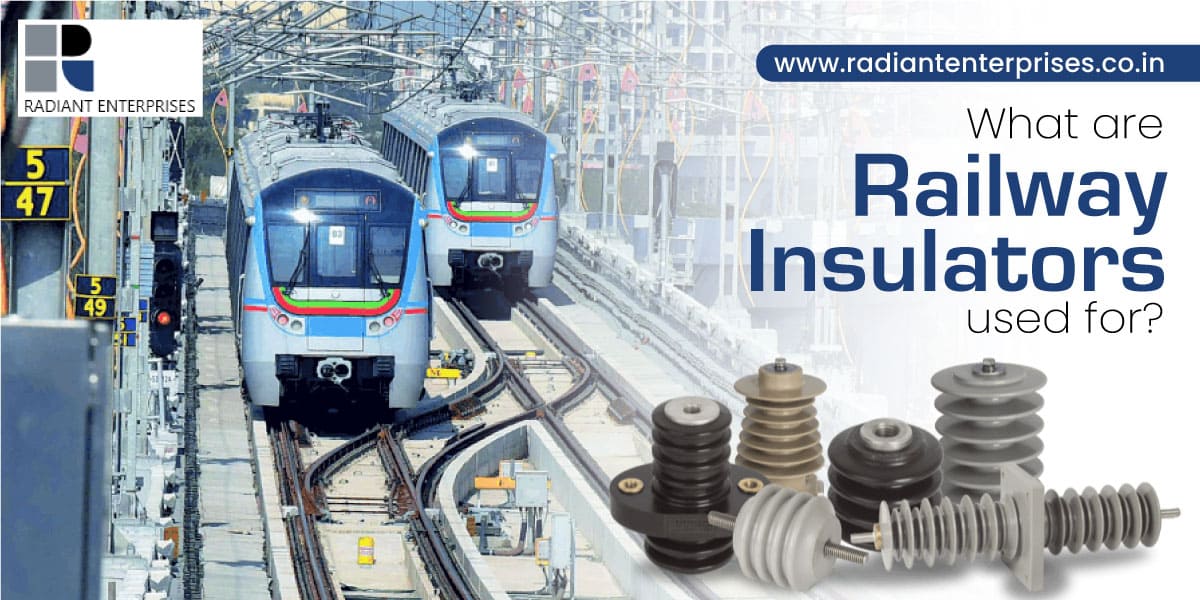
Fill all information details to consult with us to get services from us

Railway insulator, also known as rail nylon insulator, railroad epoxy insulator or rail insulation is used to modify rail gauge and electrically insulate railroad rails, rail clips, and rail bolts from the interior of a concrete sleeper. It performs the same function as a rail pad, except it is thicker. It is a crucial rail fastener for high-speed or high-load trains also it can be used along with epoxy bushings.
The Railway insulators shield the ductile iron shoulder from wear by direct contact with the rail and provide electrical insulation. They are usually positioned between the rail and the soleplate. The material is Nylon-66 (PA66) or Nylon-6, with glass fibre reinforcement ranging from 20% to 35%, depending on the specification. Radiant Enterprises offers Railway epoxy insulators for 52kg rail, UIC60, 136RE rail, 75R, 90R, and other applications in natural colours or as requested by customers.
Rails are the most important components of rail tracks. They steer the train and distribute the weight of the wheels to the passengers. It must have a smooth, continuous surface with little resistance. The two tracks currently serve as track circuit signal lines and locomotive traction loop lines on automatic block zones or electrified railways. As a result, in the event of stray current interference, rails must be insulated. On rail lines, insulated rail joints or railway epoxy insulators are typically utilised.
Railway insulators are commonly made of Reinforced Nylon 66 (PA66) in white, dark brown, or black colours. Materials and colours can also be adjusted to meet the needs of the customer.
E-type railway insulators, together with rail shoulders, rail pads, as well as E-clips are used in E-clip fastening systems to soften the passing train's stress onto the rail and return it to its original position.
SKL railway insulators, also known as guide plates, are used in SKL fastening systems and are utilised in conjunction with screw spikes, SKL tension clips, flat washers, plastic dowels, as well as rail pads.
Nabla railway insulators are generally used in the Nabla clip rail fastening systems, where they work alongside other fastener elements such as screw spikes, Nabla clips, as well as spring washers.
On signalling track circuits, insulated rail joints are required to compensate for the lack of regular joints. Glued joints are joints that have gaps filled in with epoxy resin to increase mechanical strength under stress.
Specially constructed fishplates, adhesive resin on the insulating liner, insulated rods and bolts, and other insulating pieces make up glued insulated joints. They're most commonly found on lengthy welded rails. Temperature variations and rail loading force are not a problem for glued insulated connections. Because the insulating substance is attached to the rail's steel sections, it helps to prevent gap expansion, which benefits continuous railroads. Glued insulated joints withstand the force required to keep the clips clamped to the rail. Traction and compression stresses of up to 1000 KN can be tolerated by glued insulated joints.
Between the bolts and the fishplates, there are additional insulating portions on the rails. The advantages of glued insulated joints in various situations include increased safety, reliability, and durability.
Insulated joints, on the other hand, have a long way to go. In heavyweight conditions, they service the shortest of all railway components. Current inspection techniques and equipment make it difficult to spot problems. We need to figure out a better approach to monitor the situation and make some changes.